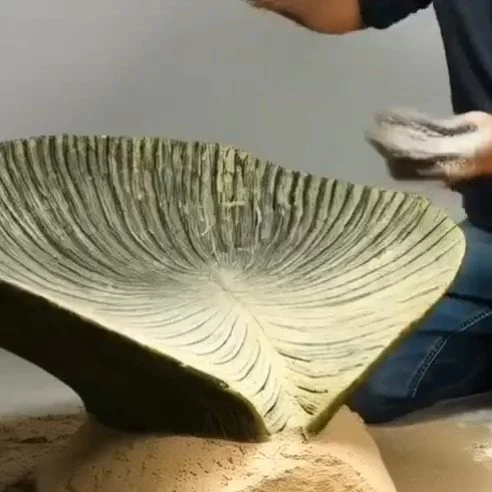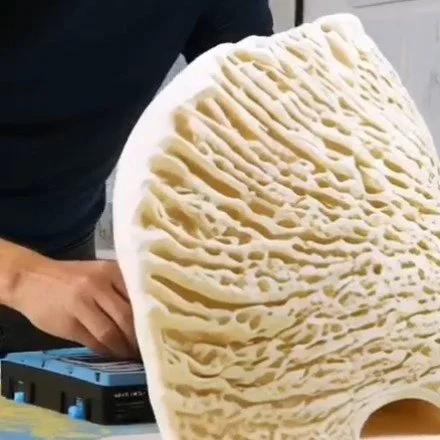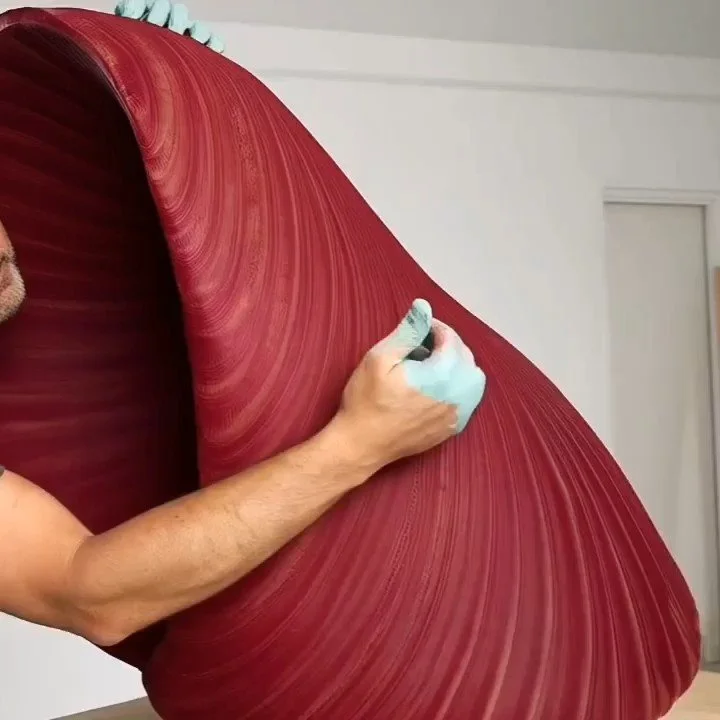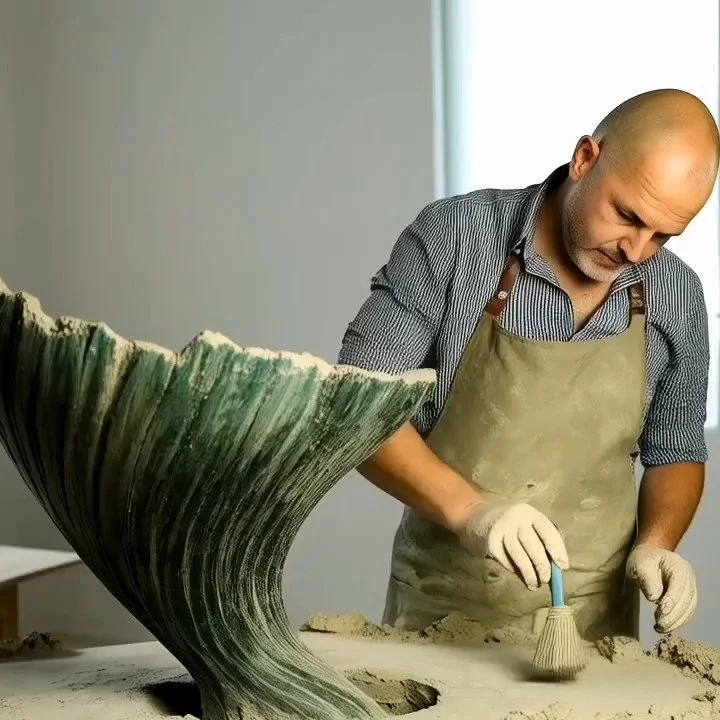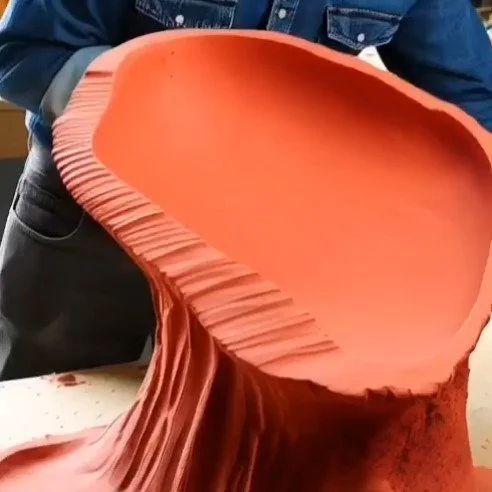The Alchemy of Innovation : Digital tools in the Art of Bronze Casting
Bronze casting is an ancient process that has evolved over thousands of years, yet it remains as captivating and intricate as ever. In my practice, the method of bronze casting is central to transforming abstract ideas into tangible, enduring forms. I choose to use a combination of both the traditional lost wax plaster block investment technique and the modern ceramic shell method, as each offers distinct advantages that align with different aspects of my process.
The lost wax plaster block investment technique provides an intuitive and versatile method for casting bronze, allowing for a deep connection between hand worked forms and the final metal outcome. This approach aligns with my hands on process, preserving the delicate details and organic textures that emerge through sculpting.
In contrast, the ceramic shell method offers a more precise and efficient workflow, particularly for complex or large scale pieces. Its layered refractory coating enables thinner, more intricate casts while reducing material waste. By integrating both techniques, I can navigate between traditional craftsmanship and contemporary innovation, ensuring that each sculpture retains the raw, expressive qualities of my initial vision while benefiting from modern advancements in casting technology.
Traditionally, bronze sculptures were created using a wax pattern derived from a reproduction mould, which was made to transform a solid clay sculpture into a wax replica. This method is particularly useful for artists producing multiple editions of a single work.
By contrast, I have always created unique works - never repeating the same piece, only evolving forms within a series or collection. For me, working with reproduction moulds felt restrictive and costly, requiring extensive materials and storage. The process was at odds with my preference for direct, intuitive making.
Early Experiments with Direct Wax Modeling
When I was a student, I bypassed the traditional reproduction mould process by working directly in wax. I cast wax into convenient shapes, modelled it by hand and worked around pre-cast plaster cores or forms. This allowed me to create a direct, single cast event, resulting in a one of a kind sculpture every time.
Over the years, this process evolved as I began experimenting with crude photogrammetry scans, capturing a sculpture through a series of photographs that, when compiled and processed, produced a digital geological scan, essentially recording points in space. When translated through early 3D printing technology, these scans could generate a physical reproduction of a basic shape.
The Serendipitous Connection Between 3D Printing and Wax Casting
A convenient coincidence emerged : 3D printers use a recyclable thermoplastic filament, a material that behaves much like wax. When cold, it remains solid and when heated, it becomes fluid - just like the wax used in traditional lost wax casting. This discovery transformed my process.
I began scanning small clay sculptures, converting them into digital models and 3D printing them as formal patterns. These printed structures became armatures onto which I could add wax, refining the form or applying surface textures by hand. The final wax enhanced models could then be invested just as traditional wax patterns would be in the lost wax casting process.
This shift was revolutionary for my practice it aligned perfectly with my commitment to making unique works and eliminated the need for expensive, material heavy reproduction moulds. Traditional foundries often require vast storage spaces for cumbersome rubber or plaster moulds, whereas digital scans can be stored compactly on a hard drive, preserving an entire archive of past works without occupying physical space.
Striking a Balance Between Technology and Hands On Craft
Digital scanning and 3D printing technologies are in a constant state of evolution, offering new efficiencies in sculptural production. However, I remain focused on maintaining physical intervention in my process. While certain procedural aspects like crushing grog for refractory plaster, recycling materials or sanding large sculptures are essential, they often hold little creative value. In traditional hierarchies, these tasks are given to apprentices as a rite of passage, but they contribute little to the deeper conceptual work of sculpture making.
For me, the most important aspect of any creative process is the conception and realisation of an idea, with conception being by far the most critical. In any artistic discipline, execution can often be delegated to skilled technicians, but the originality of thought and the final nuanced touches remain paramount. The middle stages, though necessary, are often procedural and while they demand skill, they do not define the essence of the work.
My approach continues to evolve, balancing tradition and technology, ensuring that the tools I use serve the creative vision rather than dictate it. By embracing digital advancements while maintaining a hands on sculptural language, I strive to push the boundaries of what is possible in contemporary bronze casting.
The Plaster Block Casting Process : A Tradition of Precision and Patience
The plaster block casting process begins by encasing a single wax pattern of a sculpture, a series of small sculptures or a segment of a larger piece within a refractory plaster block. This stage, known as the investment stage, involves encapsulating the pattern, which will ultimately be lost, within the plaster mould.
The refractory plaster mixture is carefully formulated and applied in specific layers, each designed to suit its role in the casting process. The initial layer is smooth and fluid, incorporating fine refractory materials and strong plaster to capture the finest details of the original wax pattern. This layer is crucial in ensuring that the intricacies of the sculpture are preserved in the final bronze casting.
Subsequent layers consist of coarser aggregates and weaker plasters. These layers act as supporting structures, with their open, coarse texture providing binding strength to the overall mould. Below are the recipes I use for each layer, tailored to meet the requirements of this complex process.
First Coat
Fine Sand / 200g
Fused Silica / 200g
Crystacal R / 400g
Water / 240g
Support Coat
Building Sand / 200g
Crystacal R / 100g
Fine Casting Plaster / 100g
Water / 120g
Final Coat
2 Part Ludo (Recycled Final Coat )
1 Part Fine Casting Plaster
or
2 Part Ludo ( Recycled Final Coat )
1 Part Fine Casting and Herculite Mix
Removing the Wax and Preparing the Mould
Once the plaster mould has been built up around the wax or 3D printed pattern, the mould is placed in a kiln for the burnout process. This stage takes place over a carefully controlled six day cycle. The kiln is gradually heated over the first two days to around 800°c allowing the wax and patterns to melt away completely and any residual moisture to evaporate. The remaining four days involve a slow cooling cycle to minimize the risk of excessive fracturing within the delicate plaster mould.
Reinforcing and Casting the Bronze
After firing, the plaster block moulds are left fragile and vulnerable, requiring careful handling. To reinforce these moulds, each one is wrapped in a protective jacket of plaster and hessian. Any remaining particles within the mould void are meticulously blown out to ensure a clean casting.
Molten bronze is then poured into each individual mould, filling the void left by the melted wax or 3D printed pattern. After pouring, the moulds are left undisturbed for 12 hours, allowing the bronze to cool and solidify. Finally, the plaster moulds are broken open, revealing the newly cast bronze sculpture within.
A Testament to Craftsmanship
This traditional approach to casting resonates deeply with the principles of craftsmanship that I hold dear. The meticulous and time intensive nature of the process demands patience, attention to detail and a profound respect for the material, qualities that align with my broader philosophy of art making. By preserving this age old technique, I find a meaningful connection to the heritage of sculpture while also integrating contemporary practices that enrich my creative journey.
Contextualising the Method
Bronze casting holds a unique position in the history of art. Its origins can be traced back to ancient civilizations, where it was used to create tools, weapons and ceremonial objects. Over time, it became a medium for artistic expression, with examples ranging from the monumental sculptures of the Renaissance to the abstract forms of modern art.
In my practice, bronze casting serves as a bridge between the ephemeral and the eternal. The process captures fleeting ideas and transforms them into something permanent, allowing them to exist beyond the moment of creation. It is a medium that invites contemplation, encouraging viewers to connect with the textures, forms and emotional resonance of the work. For me, the act of casting in bronze is not just about creating an object, but about imbuing it with a sense of history and a connection to universal themes.
Why Bronze?
Bronze has a versatility and strength that few materials can match. Its ability to be recycled, to be coloured in a vast array of different colours, to capture the finest details and its undeniable durability make it ideal for exploring the interplay of textures, contrasts and transitions, all key elements in my work.
Moreover, the process of casting itself mirrors the themes I often explore : transformation, resilience and the beauty found in imperfection. The material’s natural ability to age gracefully, developing a patina over time, adds another dimension to its story, allowing the sculpture to evolve long after it leaves my hands.
Bronze also has a sensory quality that connects it to the viewer. The cool, weighty feel of the metal and its rich, tactile textures invite interaction, drawing people into a closer relationship with the piece. Its history as a medium of communication and art gives it a resonance that transcends time, making it a powerful vehicle for contemporary expression.
Broader Reflections
By contextualising the method within my artistic journey, I hope to highlight not just the technical aspects of bronze casting but also its poetic and philosophical dimensions. It is a process that connects me to a lineage of makers and thinkers, while also providing a platform for expressing something deeply personal and contemporary. The act of casting becomes a metaphor for life itself : a transformation through heat, pressure and time that results in something enduring and unique.
Bronze casting is more than a technique; it is a dialogue between material, process and idea. Each step carries its own challenges and rewards, requiring patience, skill and a willingness to embrace uncertainty. Through this ancient method, I find a way to give form to the intangible, creating sculptures that resonate with both history and the present moment. Every piece is a testament to the journey, a journey that starts with an idea, evolves through the process and culminates in an object that invites others to pause, reflect and connect.





